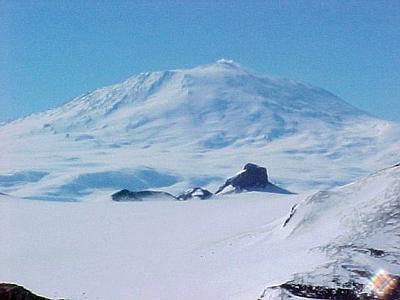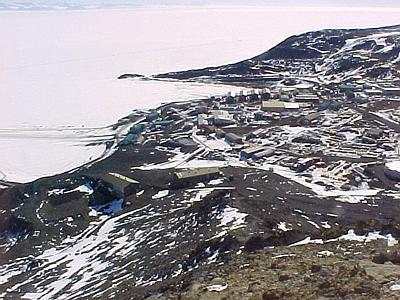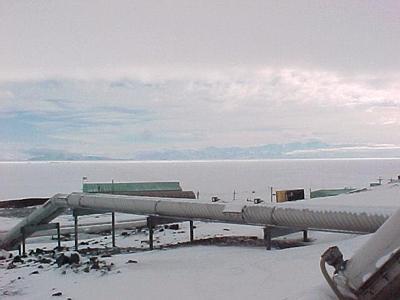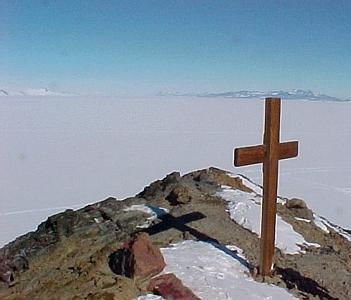
|
|
4 December, 1999
McMurdo Re-supply
I flew into McMurdo Thursday night with my kiwi co-worker, Peter. We had a
number of tasks we needed to accomplish. A few days ago, five more people
arrived at the Lake Bonney camp for a week, and we've all been competing
for the one phone line out. Because the radio phone line out to camp is
extremely slow to send messages with photos (it takes over five minutes for
each, depending on the time of day), I arranged for some concentrated time
to get entries sent out from town.
Peter and I did a food re-supply for some of the essentials that turned out
to be field favorites. Number one food item: ginger snaps! The item
re-supplied in greatest quantity: a whole case of toilet paper. Think of
the implications- what comes out of us, must then come out of the field…
Nothing simply "goes away" like it seems to at home. We have to consciously
deal with waste disposal the entire time we're on the continent. Believe it
or not, most of the solid waste from McMurdo ends up shipped to a
contractor in Washington State for incineration or recycling. My garbage
will eventually follow me home.

Late this afternoon, I climbed to the top of Observation (AKA Ob) Hill with Bob Lowenstein, an astrophysicist who does research at the South Pole. The walk up is primarily on a trail, which means we followed a thin set of the previous hikers' footsteps. Where the trail disappeared under snow, we skirted around it, picking out stable footholds in the loose volcanic debris. This is the highest I've climbed since I arrived, and the view of Erebus, Castle Rock, town and sea ice was perfect on such a clear day! The following photos scan a 360 degree view.

McMurdo Station sprawls on the edge of Ross Island. Most of the buildings are some shade of brown or gray, and when there's not a lot of snow on the ground, they match the pumice foundation of the roads. Around a thousand people live here in the summer.

All the pipes on station sit above the surface. There are staircases everywhere that cross over the pipes. Since there is not currently a wastewater treatment plant here, many of the pipes on station carry human waste to the macerator, which chops the solids up, then sends them into the Ross Sea. Other pipes carry fresh water from the water plant to sites around town.

These pipes are attached to the Hotel California and the Mammoth Mountain Inn, two of the older dormitories.

Proof that I made it to the top! Even though it's only ~690 feet tall, this is the first steep uphill hike I've been able to do without wheezing, since I've had a cough for weeks. Now I feel ready to climb the more impressive hills above my tent at Lake Bonney. Beyond me is the frozen Ross Sea, and the ribbon of mountains in the distance fringe the edge of the continent. Last time you saw this cross in a photo here, it was only a pinprick on the horizon. Do you remember what it commemorates?

Scott Base, the New Zealand Antarctic program's main station, is quite small and tidy. As you can see, it's painted a uniformly pale green. The summer population fluctuates between sixty to seventy people. In the winter, only nine or ten people live there.

On the summit of Ob Hill stands the cross that honors the men who died on Robert Falcon Scott's final expedition. The original cross was placed there in 1912 by would-be rescuers who discovered the frozen bodies. The names of the men are inscribed, as is a quote from the last line of Ulysses, by Alfred Lord Tennyson, "To Strive, to Seek, to Find, and Not to Yield."
Contact the TEA in the field at
.
If you cannot connect through your browser, copy the
TEA's e-mail address in the "To:" line of
your favorite e-mail package.
|
